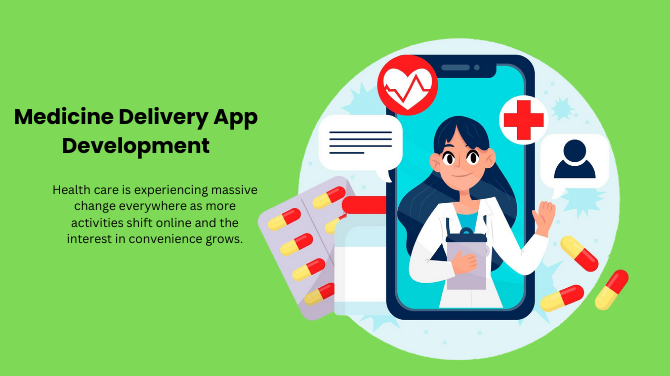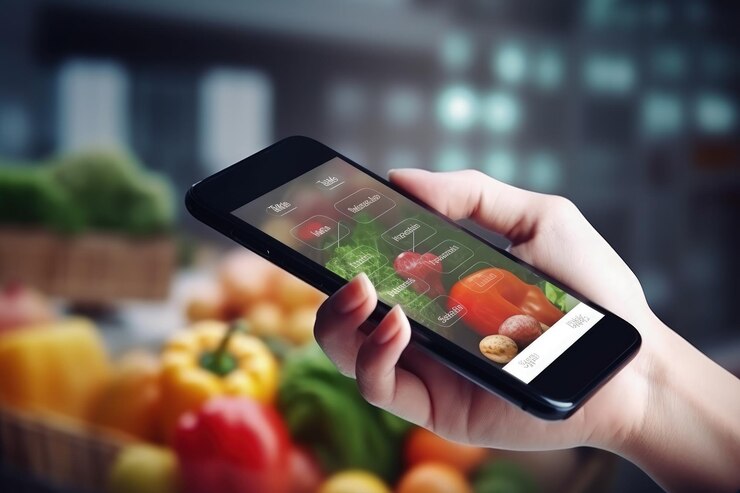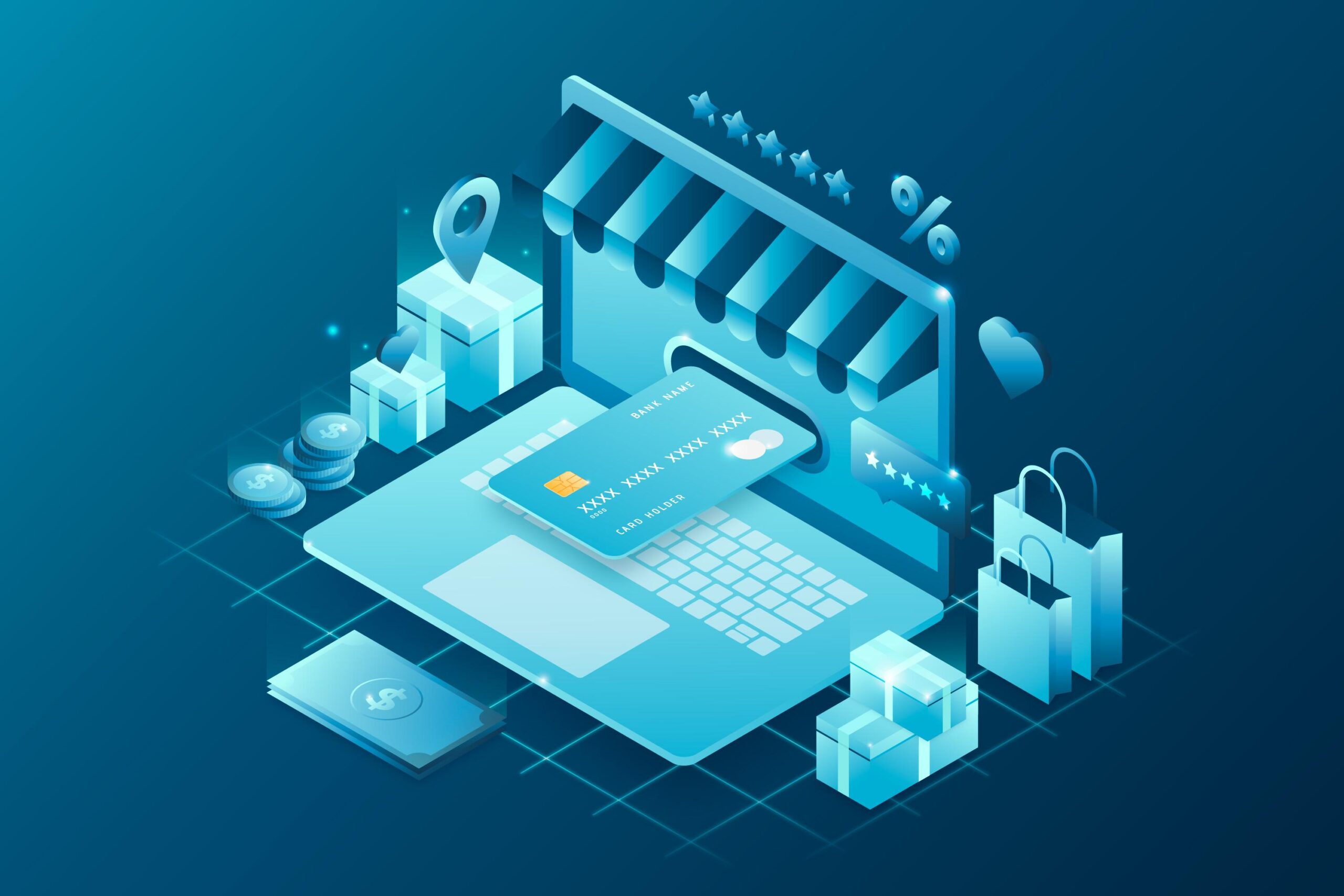Health care is experiencing massive change everywhere as more activities shift online and the interest in convenience grows. Medicine delivery app development is one of the most noticeable evolved features. These apps have transformed patients’ ability to acquire medications by enabling easy, effective, and convenient ways to deliver them to their doorstep. In this article, the reader will find detailed information about providing an application for medicines, its advantages, main characteristics, prospects, and potential issues.
Understanding Medicine Delivery Apps
Medicine delivery apps refer to business products that involve the development of mobile applications that allow users to order prescription and over-the-counter drugs online. These applications help establish a connection between the clients and the pharmacy shops, enabling the delivery of the necessary medications to the user’s doorstep. It usually includes inputting a prescription, choosing medicines, payment for the order, and monitoring until the order gets to the customer.
Benefits of Medicine Delivery Apps
1. Enhanced Accessibility
Medicine delivery apps bring pharmacy services closer to users, benefiting the disabled, chronically ill, or people with tight working schedules who don’t have time to visit physical pharmacies.
2. Convenience
There is no better way to get the desired medicines than through the online platform. The ability to order food anytime from the comfort of your home or anywhere and deliver it to them benefits the users. This helps users avoid the usual trek to the pharmacies.
3. Wide Range of Products
Local pharmacies typically have limited products, while medicine delivery apps may contain hundreds of products online. Buyers can quickly search for frequently prescribed drugs and obtain drugs that are not generally well-known, as well as healthcare products, including supplements, medical equipment, and personal care products.
4. Cost Savings
Now, on the digital platform, medicine delivery applications are also available, cheaper than the actual retailer’s stores that don’t even provide many offers and discounts on medicines. Besides, users can arrange the prices within the available pharmacies to obtain the best prices, thus cutting expenses.
5. Medication Management
Some applications have prescription options, such as a prompt to refill the drugs and an option to track the dosage. This, in turn, assists the patients in observing their medication regimes, resulting in better health status.
Key Features of Medicine Delivery Apps
So, it is crucial to identify a set of features that will define the efficient medicine delivery app from the standpoint of both users and pharmacies. Here are some essential features to consider:
1. User Registration and Profiles
Thus, one of the most effective strategies is to provide clients with a secure and easy registration option. Patients should also be able to fill out their details, store information regarding their identity and medical records, and create accounts. In essence, proper handling of such data is needed.
2. Prescription Upload
Another great feature required in the app development is the ability to upload prescriptions. The user can either capture a photo of the prescription or scan the document. Similarly, pharmacists should be able to verify the identification of the prescribed medicines with the app’s help.
3. Search and Browse
The search and browsing capabilities provide users with all the information involving medications. The search engines have improved features such as categories, filters, and suggestions.
4. Order Management
Users should be able to follow and monitor their orders from when they place them to when they are delivered. They should receive notifications and alerts about the status of their orders.
5. Multiple Payment Options
Accepting digitally active payment methods like credit/debit cards and online wallets, as well as conventional methods like cash on delivery makes it comfortable for users.
6. Pharmacy Management Dashboard
Any pharmacy requires a proper and efficient interface to assess the orders, check the prescriptions, update stock, and answer customer queries. These backend functions are essential for any institution to eff.
7. Rating and Reviews
Rating and reviewing products and services puts users at ease and offers valuable feedback that can assist in improvement.
8. Customer Support
Customer support should include chat, email ticketing, and phone support, which should be quick and effective for addressing problems and keeping end-users satisfied.
Challenges in Medicine Delivery App Development
As much as it is encouraging to work on a medicine delivery app, the development has some drawbacks. Meeting these challenges is essential for the app’s growth and sustainability.
1. Regulatory Compliance
Healthcare delivery is a closely governed sector, and many laws and regulatory compliances govern the workings of medicine delivery apps. This involves protecting medical data, data privacy, and security (HIPAA when practicing in the USA, GDPR when practicing in Europe) and meeting drug-regulating laws concerning the sale and distribution of drugs.
2. Data Security
Data security is crucial for user safety, including protecting personal data, medical histories, and payment details. Security is also essential to avoid data leakage and other losses; this requires regular security assessments, proper authentication, and data encryption.
3. Prescription Verification
It is challenging to guarantee that the prescriptions obtained and used are authentic and legitimate. Due to the possible misuse of those codes, measures must be installed in the vicinity, starting with developing a valid verification system, perhaps with the help of skilled pharmacists and automatic structures.
4. Logistics and Supply Chain Management
Coordinating orders and deliveries of medication, arranging for the inventory positions of the special drug treatments to be restocked, and obtaining the literature required for reading the medicine dosages can be tough. Working with dependable logistics suppliers is critical, and high-tech tracking technologies are essential.
5. User Trust and Adoption
Trust is also a prerequisite when addressing users, which is very important in the healthcare industry. In particular, the authors noted that effective communication of security measures, reliable service, and responsive customer support will lead to the app’s usage.
Steps to Develop a Medicine Delivery App
1. Market Research and Planning
Ensure that the required research on customer needs and the offers that suit their abilities is appropriately done. You want to comprehend your competitors and their strengths and weaknesses. It is essential to create a marketing strategy to define how your app can be of cost, to whom, and the way you may make money.
2. Define Features and Functionality
Concisely describe the application’s fundamental components and operations based on market demands. It is recommended that the features relevant to the application’s most valuable areas to the user and the pharmacy be focused on. Create wireframes and random prototypes to model the user interface and user experience.
3. Choose the Right Technology Stack
Choosing the correct technology stack is essential in how the app will perform and if it can handle many users. Standard technologies for medicine delivery apps include: Common technologies for medicine delivery apps include:
- Frontend: The alternatives are React Native and Flutter, Swift for iOS, and Kotlin for Android.
- Backend: Node. Both variants are used in WEB applications by JS, Django, or Ruby on Rails.
- Database: PostgreSQL, MongoDB
- Cloud Services: which can be of Amazon Web Service (AWS), Google Cloud, or Microsoft Azure.
4. Development and Testing
Start the architectural process by creating the frontend and backend parts. The next step is to actualize the defined features and guarantee module compatibility. Conducting extensive testing to discover any existing bugs or problems is highly recommended. Further enhancements can be achieved through beta testing with a selected number of users.
5. Regulatory Compliance and Security
This means that your app meets all the legal requirements it should. Ensure you employ proper security measures to prevent unauthorized access while working on the data. Periodic security analysis and upgrades are best for combating the various threats and securing the program’s future.
6. Launch and Marketing
The launch should be well-planned when all the app’s features have been developed and well-tested. They recruit customers through multiple marketing platforms, including social media, content marketing techniques, and affiliation with healthcare facilities. They sell the idea that their first users will get introductory discounts and sales.
7. Post-Launch Support and Updates
One of the primary factors that requires consistent enhancement is the users’ satisfaction levels. Engage users constantly to solve any queries or problems they may be facing. Continuously upgrade the app, adding new features and fixing bugs based on user feedback and market trends.
The Future of Medicine Delivery Apps
The future of medicine delivery apps looks promising, with several trends and advancements shaping the industry:
1. Integration with Telemedicine
It will be relevant to combine the delivery of medicine applications with options for telemedicine. As a result, telemedicine can provide a complete healthcare program. It can also inform patients about doctors’ availability and enable them to receive a prescription and purchase medicines in one application.
2. AI and Machine Learning
AI and machine learning can improve individual approaches to a target audience, optimize stock use, and determine needs. Artificial intelligence can offer immediate customer attention and timely reminders about medications.
3. Blockchain Technology
Businesses stand to benefit when they apply blockchain technology because it will help improve data security and transparency of information. It will also help minimize the time taken to verify a prescription to avoid fakes and fraud.
4. Wearable Devices Integration
Connectivity with Wearable devices can help users get the latest health status, which will help them receive more accurate and timely medication advice and alerts.
5. Expansion of Services
Medicine delivery applications can increase the range of services offered by allowing users to book lab tests, make doctor appointments, and buy healthcare and associated products.
Conclusion
The development of medicine delivery apps is drastically altering the current interventions that people and consumers get concerning medications through more accessible and affordable ways. Suppose these issues are correctly solved, and modern technologies are used in their work. In that case, developers can build reliable and convenient applications that will satisfy the needs of today’s patients and healthcare workers. Taking into consideration the prospect of the industry’s further development, it is imperative to note that medicine delivery apps will also maintain their relevance to boost the accessibility of healthcare as well as the improvement of patient experiences in the future. Accepting this innovation is, therefore, suitable for business and the general society since it promotes healthy and connected individuals.



